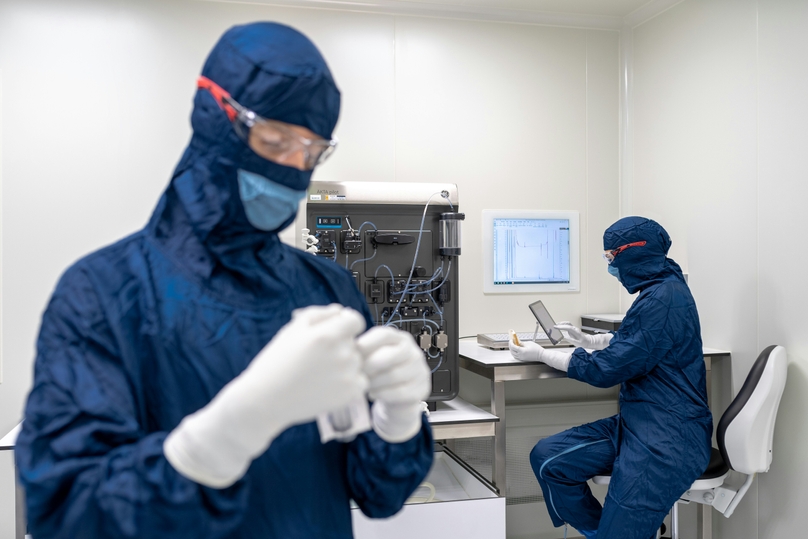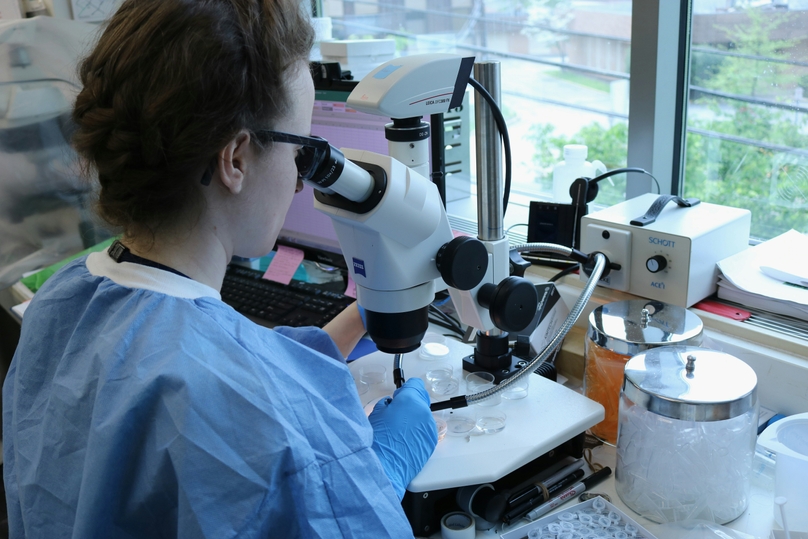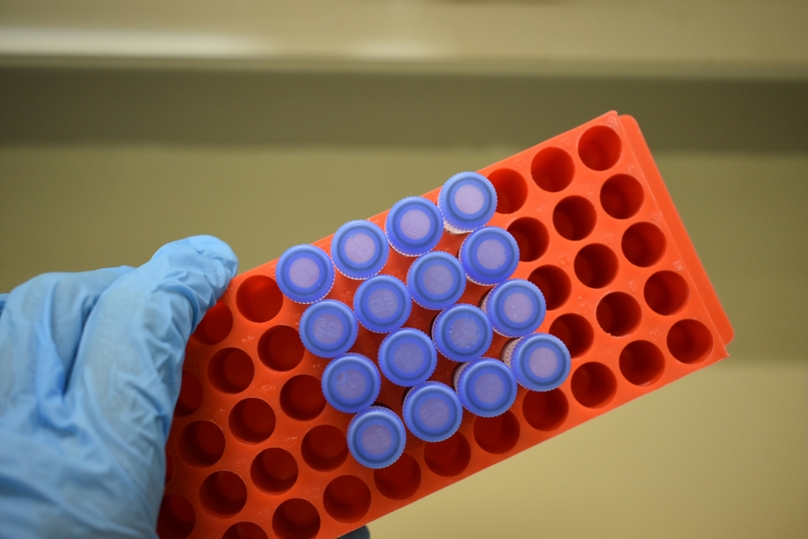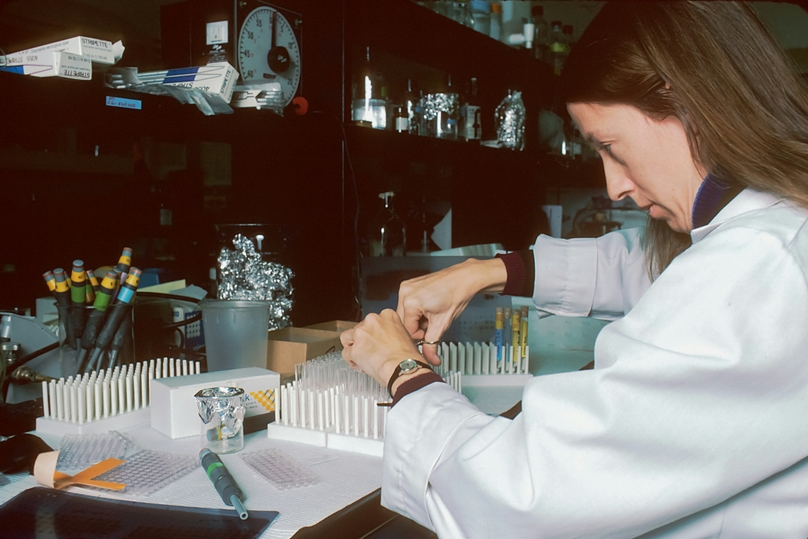An advanced software program called a Laboratory Information Management System (LIMS) is made specifically to handle samples and related data in lab settings. By managing test data, automating workflows, and guaranteeing regulatory compliance, it improves laboratory operations. By supporting a number of laboratory procedures, such as sample tracking, data management, and reporting, LIMS enhances accuracy and efficiency in lab settings.
Cloud-based LIMS for Biotechnology Labs
Biotechnology laboratories require cloud-based LIMS software for several critical reasons:
Data Management: Biotech labs handle enormous volumes of data produced by tests and studies, a cloud based LIMS offers an organized method for effectively storing and retrieving this data.
Regulatory Compliance: By guaranteeing that all procedures are traceable and documented, LIMS aids in maintaining compliance.
Workflow Automation: By automating routine processes, LIMS software lowers human error and frees up staff members to concentrate on more difficult jobs.
Scalability: Biotech businesses have increasingly complicated data management requirements as they expand. Increased sample quantities and more complex workflows may be accommodated by a strong cloud-based LIMS that grows with the company.
A variety of features designed to meet the requirements of biotechnology labs are provided by LIMS software. It keeps thorough records of every sample's lifecycle, from receipt to testing and analysis. For automated data gathering, storing, and processing, LIMS enables smooth integration with lab equipment. In order to prevent lab operations from being disrupted by supply shortages, it keeps an eye on the availability of consumables and reagents. Biotechnology labs can improve research outputs by implementing a LIMS, which streamlines operations and improves data integrity and compliance.
Curious to know what LIMS can do for your Biotech Lab?
Sample and Workflow Management
For biotechnology labs to manage samples effectively, a strong LIMS is necessary. By automating sample tracking from reception to analysis, it guarantees that every sample is tracked throughout its lifecycle. This includes functions like workflow automation and batch management, which group samples into batches for expedited processing and improve responsibility and visibility. This guarantees smooth task and team transitions, enhancing cooperation and reproducibility of outcomes.
Data Security
In biotechnology, data security is crucial since private data must be shielded from breaches and illegal access. LIMS limits access to data according to the roles and responsibilities of users. Multi-factor authentication (MFA) is supported to improve security.
Compliance of LIMS with regulations like HIPAA, CLIA, and FDA guarantees that data handling procedures adhere to legal standards.
Regulatory Compliance and Audit Trails
Numerous regulatory requirements must be met by biotechnology labs. Complete logs of every action made inside LIMS guarantee data audit trails. Maintaining quality assurance requires built-in tools to assist conformity to regulations like FDA 21 CFR Part 11.
Integration with Other Software
A modern LIMS should seamlessly integrate with other laboratory systems to enhance functionality. Important integration features include:
ELN: Electronic Lab Notebook enables the digital capture of observations and experimental data, improving researcher collaboration.
Order Management Systems: It simplifies the reagent and supply procurement process, guaranteeing that labs are promptly and adequately stocked.
Instrument Integration: It reduces errors in manual entry and boosts efficiency by supporting direct contact with lab equipment for real-time data acquisition.
Together, these features of a comprehensive LIMS improve laboratory accuracy, efficiency, and adherence to industry standards.
Benefits of Using LIMS in Biotech Industry
Installing a LIMS in biotechnology labs not only increases operational effectiveness but also puts biotech businesses in a stronger position to succeed in a sector that is changing quickly.
Research and Development
By automating operations and data administration, a LIMS software greatly improves the biotechnology research and development process. By reducing manual labor, this technology frees up academics to concentrate on creative work rather than administrative responsibilities. LIMS makes sure that all pertinent information is readily available by centralizing sample tracking and data storage, which speeds up decision-making and improves project management.
Data Accuracy and Reproducibility
In biotech labs, LIMS is essential for increasing data reproducibility and accuracy. Standardized procedures and automated data entry are two ways that LIMS reduces human error, which can provide uneven outcomes. All data changes are recorded thanks to the system's strong audit trails, which is crucial for confirming findings and upholding scientific integrity. For experiments where reproducibility is essential to confirming results, this degree of accuracy is essential.
Improving Collaboration Across Teams
In biotechnology, where interdisciplinary teams frequently collaborate on complicated projects, collaboration is essential. By making it simple for team members to share data, procedures, and outcomes, a LIMS improves collaboration. It creates a unified research environment by integrating with various lab systems, including ELNs. Driving innovation requires smooth collaboration and communication between departments, which is made possible by this interconnection.
Accelerating Time-to-Market for Biotech Innovations
The capacity of a LIMS to speed up new ideas' time to market is among its most important advantages in the biotechnology industry. LIMS for biotech companies helps accelerate the time it takes to get innovations from concept to market by boosting collaboration, optimizing data management, and streamlining operations. In a competitive business where prompt solution delivery can result in major market benefits, this quick development cycle is essential. A LIMS software efficiency can lead to quicker reactions to market needs and regulatory submissions, which will ultimately boost profitability.
Choosing the Right LIMS for Your Biotech Lab
Assessing the unique requirements of your biotech lab is the first step in choosing a Laboratory Information Management System (LIMS). This entails being aware of the particular procedures, kinds of samples, and legal requirements that your laboratory works with. Key considerations include:
Identify the kind of samples you handle (chemical, biological, etc.) and your unique tracking requirements.
Determine whether laws (such as GLP, CLIA, and HIPAA) are relevant to your laboratory and confirm that the LIMS can facilitate adherence.
Talk to laboratory employees to learn about their usability and functionality requirements.
Features to Prioritize in a LIMS Solution
Prioritize the most important aspects in a LIMS solution when you have a firm grasp of your lab's requirements.
Search for strong sample tracking features, such as batch management and unique identifiers.
To increase productivity and lower human error, make sure the LIMS can automate repetitive processes.
Assess security features including encryption, access controls, and adherence to industry norms.
Existing lab equipment and software, such as analytics platforms and Electronic Lab Notebooks (ELNs), should be smoothly integrated with the LIMS.
Adoption depends on a user-friendly interface; choose a system that requires less staff training.
Customization and Scalability for Biotech Applications
Scalability and customization are essential for a LIMS software to meet the changing requirements of biotech applications.
Workflows, data fields, and reporting formats must all be customizable. Seek out systems that can be configured with little or no code to support particular lab procedures without requiring a lot of programming expertise.
Select a LIMS that can grow with you, accommodating larger sample sizes and more intricate workflows without sacrificing efficiency.
Implementation and Best Practices for LIMS in Biotech research
Planning and Setting Up a LIMS
Implementing LIMS in a biotech lab requires careful planning and execution. Key steps include:
Establish Goals: Clearly state the objectives of the LIMS implementation, taking into account the particular requirements of the laboratory and the intended results.
Gathering Requirements: Evaluate current processes, data management requirements, and compliance standards in detail.
Project Planning: Create a thorough project plan that outlines deadlines, resource allocation, and key performance indicators (KPIs).
Pick the Correct Vendor: Pick a LIMS supplier that provides strong implementation support and fits well with the unique needs of your lab.
Implementation Team: Put together a committed group of project managers, IT experts, and lab staff to supervise the implementation procedure.
Training Teams to Maximize LIMS Benefits
Effective training is crucial for maximizing the benefits of a LIMS implementation:
User Training Sessions: Provide thorough instruction to all users, emphasizing how to use features pertinent to their responsibilities, input data, and navigate the system.
Ongoing Support: After deployment, offer users ongoing assistance to handle any queries or difficulties they might have adjusting to the new system.
Feedback Mechanism: Create avenues for user input to pinpoint areas where the system and training procedures need to be improved.
Avoiding Common Pitfalls During LIMS Implementation
To ensure a successful LIMS implementation, it is essential to avoid common pitfalls.
Poor Planning: Missed deadlines, scope creep, and budget overruns can result from a lack of a thorough project plan.
Ignoring the needs of users: A system that does not satisfy end users' needs may arise from their exclusion from the requirements collection process.
Underestimating Training Needs: Inadequate instruction can cause annoyance and impede user adoption.
Ignoring Change Management: Workflow and process modifications are frequently necessary when implementing a LIMS.
Conclusion and Next Steps
A smart decision that can greatly improve data integrity, operational efficiency, and regulatory compliance is implementing LIMS in your biotechnology lab. The key components of LIMS, its advantages for biotech labs, and best practices for its effective deployment have now been discussed. A well-chosen LIMS can be a game-changer for your lab by expediting time-to-market for breakthroughs, enhancing data accuracy, promoting cooperation, and simplifying research and development procedures.
To move forward with how to implement LIMS in biotech labs, consider the following actionable steps:
Conduct a Needs Assessment: Get feedback from laboratory employees to determine particular needs and problems. Record current processes and ascertain how a LIMS may enhance them.
Research and Evaluate LIMS Solutions: Examine many LIMS providers serving the biotech sector. To evaluate features and usability, ask for sample and demo versions.
Develop an Implementation Plan: Make a thorough project plan including deadlines, roles, and important checkpoints. Determine possible obstacles and create plans to overcome them.
Engage Stakeholders: Early on in the process, involve important stakeholders from several departments to guarantee support and buy-in. To encourage excitement for the change, explain to all users the advantages of the LIMS.
Plan for Training: Create a thorough training curriculum that is suited to the various user roles in the lab. To assist users in adjusting to the new system, take into account methods for continuing support.
Monitor and Optimize: Following deployment, keep an eye on user comments and system performance. Be ready to modify or improve in response to changing laboratory requirements.
Resources for Further Reading
Investigate these resources to learn more about LIMS and its uses in biotechnology. "Journal of Biotechnology" and "Biotechnology Advances" are two journals that frequently publish articles about laboratory management systems. Numerous LIMS providers provide informative seminars that go over case studies and best practices in biotech labs. To network with peers and gain knowledge from their experiences, join local biotech clubs or industry alliances such as the Biotechnology Innovation Organization (BIO).
The comprehensive approach of Genemod's LIMS, which combines ELN capabilities with strong inventory management and an intuitive design, makes it stand out. Its emphasis on automation and scalability makes it especially desirable for contemporary labs trying to boost output while effectively handling intricate procedures. Genemod's LIMS software is positioned as a state-of-the-art option for biotechnology labs seeking to update their operations with an emphasis on efficiency, cooperation, and compliance due to its cloud-based user-friendly interface and ease of integration.


















